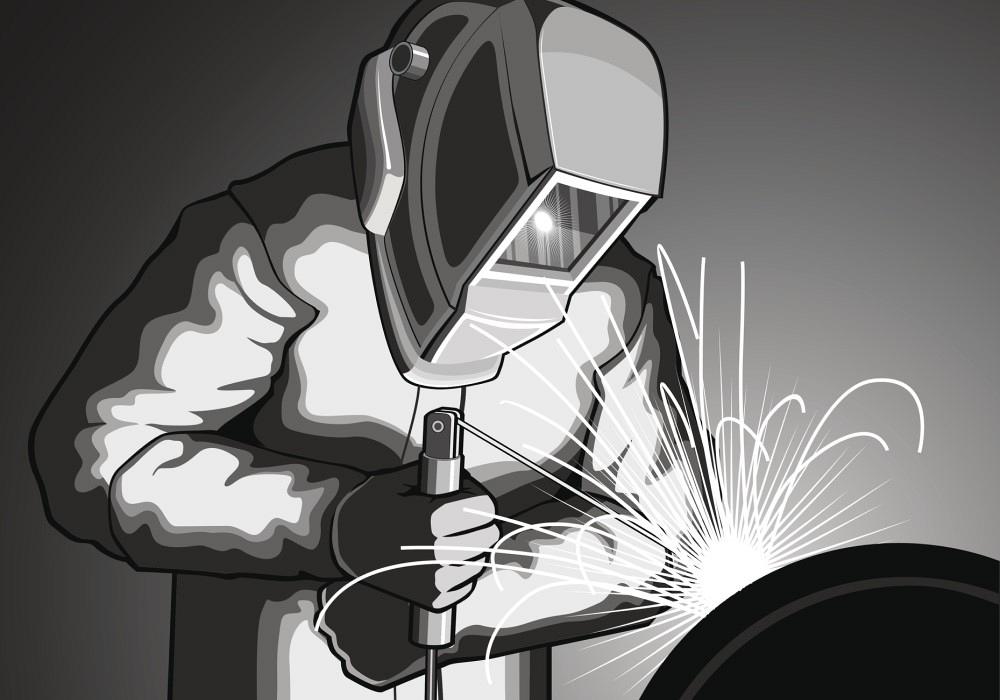The Ultimate Overview to Welding WPS Procedures: An Extensive Overview for Welders
In the complex world of welding, Welding Procedure Specifications (WPS) act as the foundation of ensuring top quality, uniformity, and safety and security in welding operations. Comprehending the nuances of creating, executing, and monitoring WPS procedures is necessary for welders aiming to elevate their craft and meet sector standards. As we dig right into the various elements of a WPS and discover the intricacies of certification and qualification, we will certainly reveal the vital duty these treatments play in the world of welding. Let's begin on a trip to decipher the complexities and importance of WPS treatments in welding methods.
Importance of WPS Procedures
Comprehending the significance of Welding Treatment Specs (WPS) treatments is important for ensuring the high quality and stability of welded frameworks. WPS procedures work as a roadmap for welders, describing the necessary steps, criteria, and materials required to accomplish an audio weld. By sticking to WPS standards, welders can make sure consistency in their job, resulting in structurally audio and trustworthy welds.
One of the main factors why WPS procedures are important is their duty in maintaining weld high quality and honesty. Following the specified welding specifications and techniques described in the WPS assists protect against flaws such as porosity, cracking, or incomplete combination, which can compromise the strength and toughness of the weld.

Parts of a WPS
A Welding Treatment Requirements (WPS) commonly consists of necessary elements that information the certain requirements for performing a weld, guaranteeing uniformity and quality in the welding procedure. The crucial components of a WPS include crucial variables such as base steels, filler metals, interpass and preheat temperatures, welding processes, protecting gases, welding settings, and post-weld warm therapy needs.
Base steels refer to the materials being joined, while filler metals are utilized to load the gap in between the base metals throughout welding. The welding procedure describes the particular method to be made use of, whether it's gas steel arc welding (GMAW), secured steel arc welding (SMAW), or one more approach. Welding settings define the orientations in which welding can be carried out.

Credentials and Accreditation
Having actually developed the crucial parts of a Welding Procedure Specification (WPS), the focus currently changes towards the vital facets of qualification and certification in welding techniques.

Qualification, on the other hand, is the formal acknowledgment of a welder's certifications by an appropriate certification body or organization. Welding accreditations are normally based on the details welding processes, materials, and placements a welder is qualified to function with. Holding a valid welding accreditation demonstrates that a welder fulfills industry requirements and is competent to do welding jobs to the needed requirements.
Creating a WPS
To establish a Welding Treatment Requirements (WPS) that fulfills industry standards, cautious consideration of welding procedures, materials, and operational parameters is crucial (welding WPS). The very first action in developing a WPS is to recognize the welding process to be used, such as gas metal arc welding (GMAW) or protected steel arc welding (SMAW) As soon as the welding procedure is established, the next important element is picking the appropriate products, considering factors like base steel type, density, and joint design. Operational criteria such Our site as welding current, voltage, traveling rate, and shielding gas structure have to likewise be carefully defined in the WPS.

Implementing and Keeping Track Of WPS
Upon settling the detailed Welding Treatment Spec (WPS) that thoroughly information welding processes, products, operational parameters, and high quality assurance steps, the emphasis changes to successfully implementing and monitoring the established treatments. Execution entails making certain that all welders entailed in the job are familiar with the WPS and follow it thoroughly during the welding process. Reliable application and surveillance of the WPS are vital for making sure the stability, toughness, and safety and security of the bonded joints, inevitably adding to the overall success of the welding job.
Verdict
To conclude, understanding and following Welding Treatment Specs (WPS) is crucial for welders to make sure top quality, consistency, and safety in their work. By knowing the parts of a WPS, acquiring correct certifications and qualifications, developing in-depth procedures, and implementing and monitoring them properly, welders can improve their abilities and proficiency in welding techniques. Following WPS treatments is essential for creating premium welds and conference market criteria.
In the important source intricate globe of welding, Welding Treatment Requirements (WPS) offer as the foundation of making certain quality, consistency, and safety in welding operations. The welding process describes the specific technique to be utilized, whether it's gas metal arc welding (GMAW), protected metal arc welding (SMAW), or another technique.To establish a Welding Procedure Spec (WPS) that fulfills industry requirements, mindful consideration of welding processes, materials, and functional criteria is crucial. The initial step in creating a WPS is to recognize the welding procedure to be used, such as see this here gas steel arc welding (GMAW) or protected steel arc welding (SMAW)Upon wrapping up the thorough Welding Treatment Requirements (WPS) that thoroughly details welding procedures, materials, functional specifications, and top quality assurance steps, the focus shifts to effectively applying and keeping track of the well-known treatments.